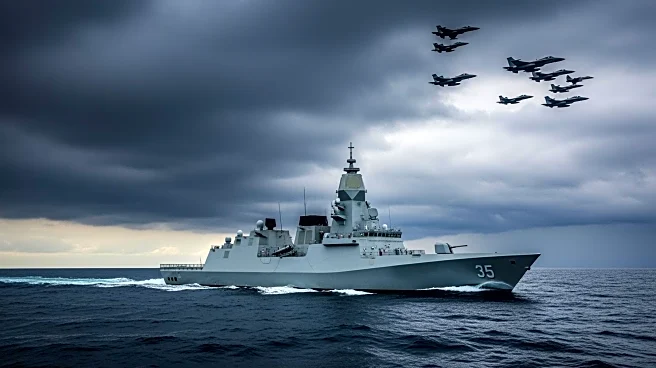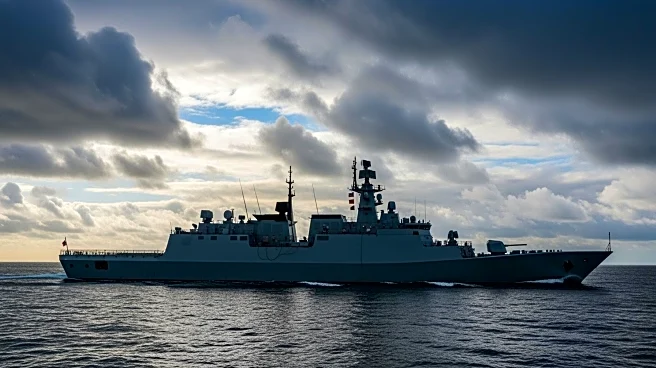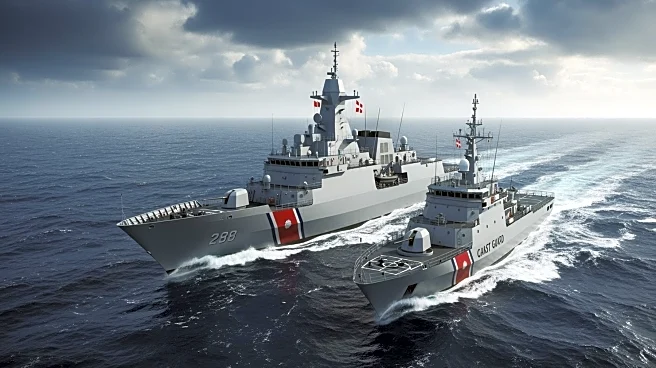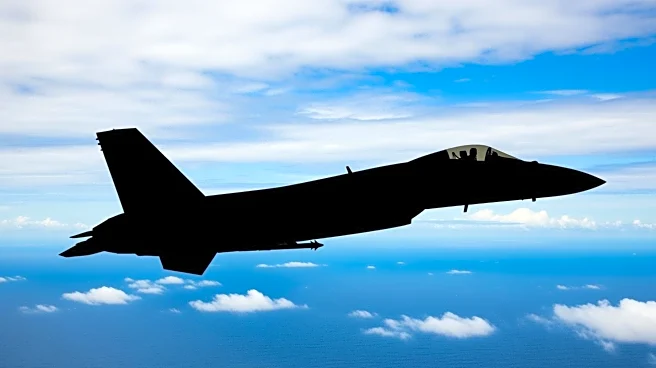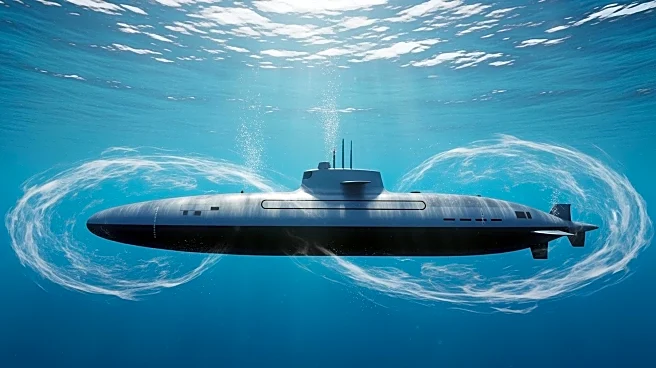What's Happening?
The United States, along with its Pacific and NATO allies, conducted a military exercise in the Philippine Sea near China. This drill, known as the Annual Exercise, involved forces from the U.S., Australia,
Canada, France, Japan, and New Zealand. The exercise aimed to enhance the U.S.-Japan bilateral alliance through maritime communication tactics, anti-submarine and air warfare operations, and replenishment at sea. Approximately 20 vessels and 20 aircraft participated, including U.S. Marine Corps F-35B and U.S. Navy F-35C stealth fighter jets. The exercise serves as a deterrent against regional instability and aggression, particularly in light of China's military buildup and sovereignty claims over Taiwan, the South China Sea, and the Senkaku Islands.
Why It's Important?
The military exercise underscores the U.S. commitment to maintaining a free and open Indo-Pacific region, countering China's growing military presence. This action is significant as it demonstrates the U.S. and its allies' resolve to deter potential Chinese aggression. The exercise also highlights the strategic importance of the region, where tensions have been rising due to China's assertive territorial claims. The U.S. aims to project military power to reassure its allies and partners, including Japan, Taiwan, and the Philippines, of its support and readiness to defend against regional threats.
What's Next?
The U.S. and its allies are expected to continue conducting military exercises in the western Pacific to signal their capabilities and resolve to defend against regional aggression. These exercises will likely involve further collaboration among allied nations to enhance combat interoperability and readiness. The ongoing military activities may prompt reactions from China, which has previously criticized such exercises as threatening regional peace and stability.
